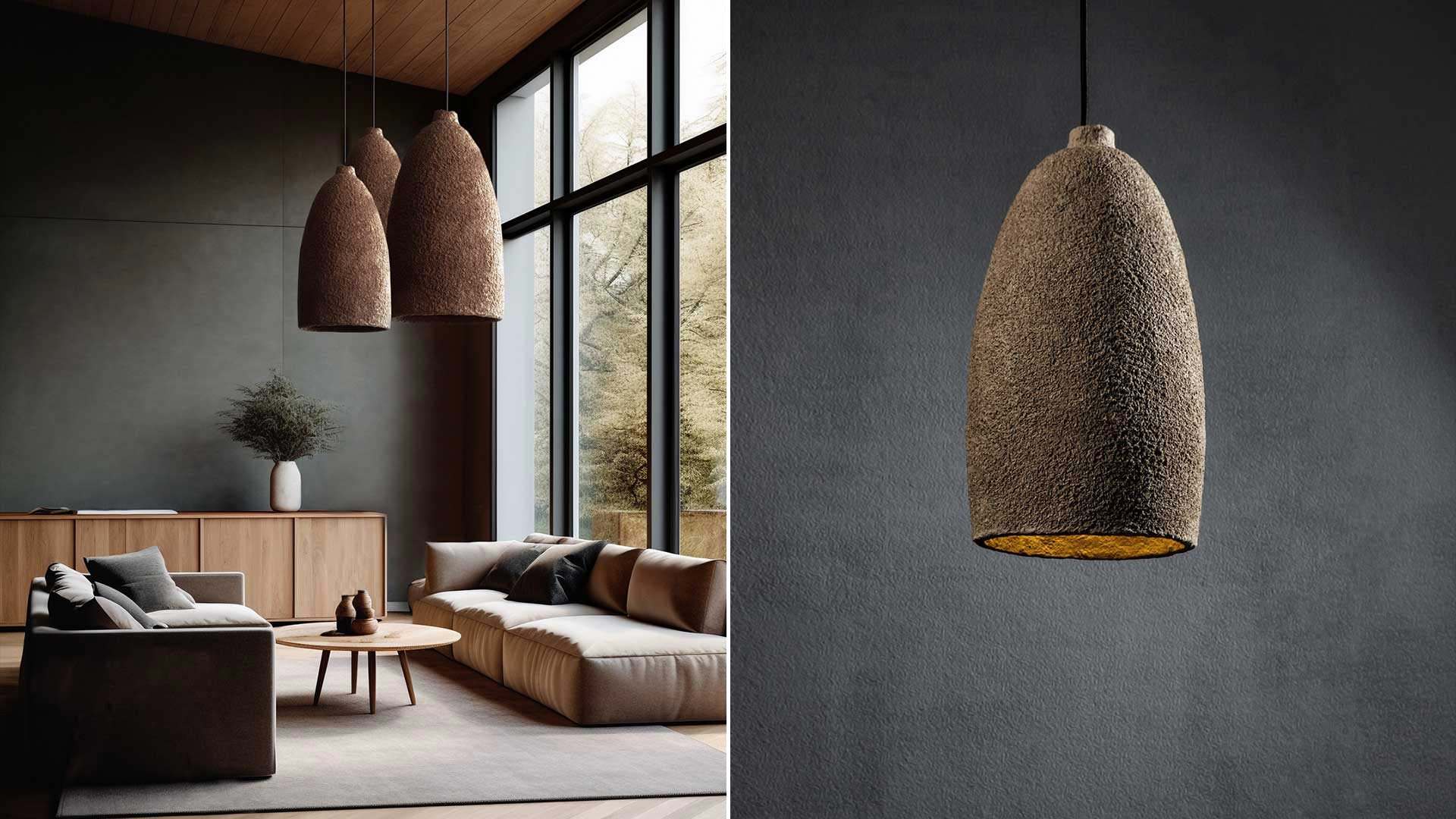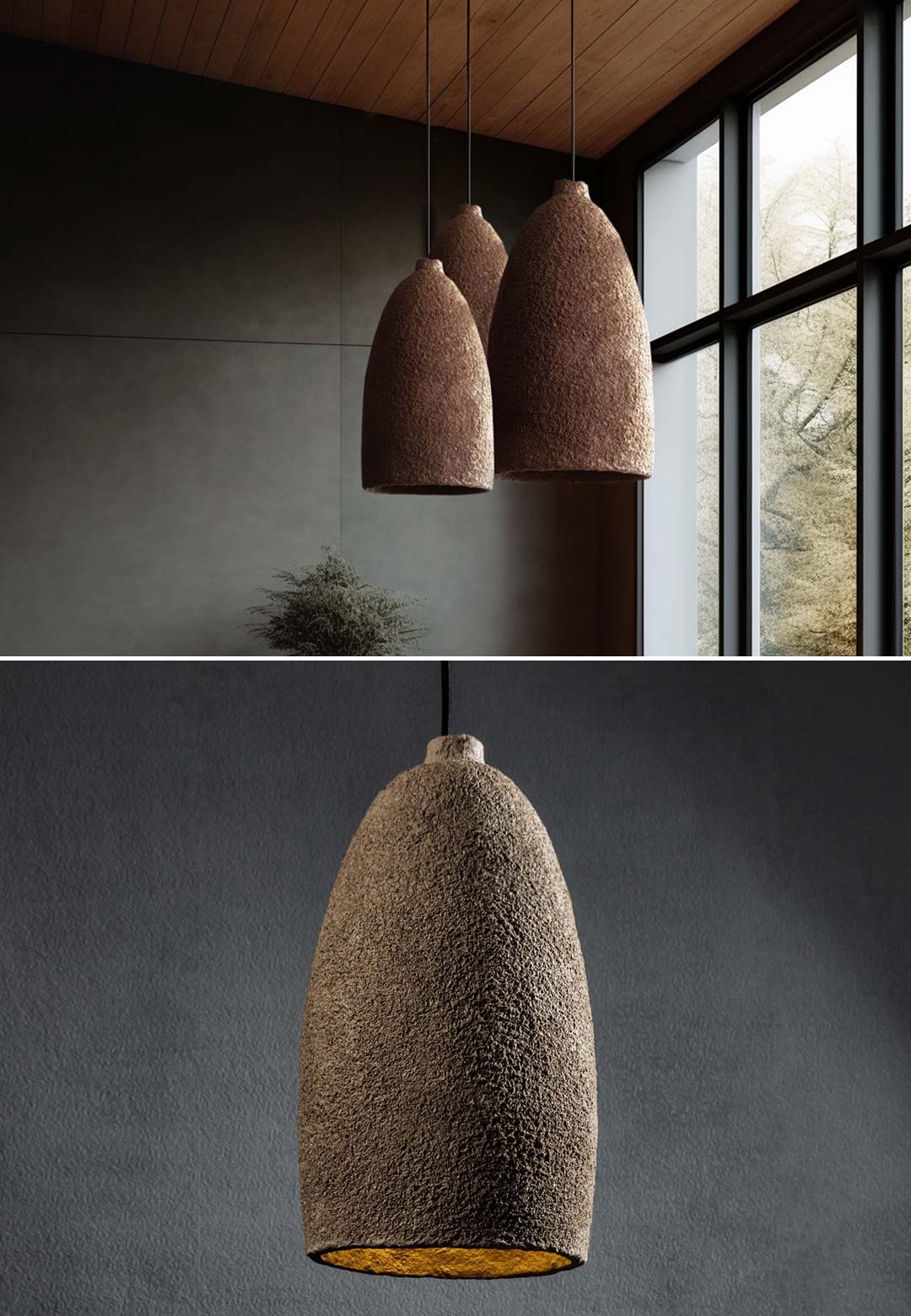Materials derived from living organisms, including plants, animals, and fungi, are gaining momentum in the design industry among architects and designers due to their positive environmental impact. Biomaterials, are favoured for their cruelty-free production, biodegradability and ability to store carbon dioxide throughout their lifecycle. As a result, they effectively reduce the carbon footprint of buildings and products they are used in. An example of a studio that has actively embraced biomaterial utilisation is a Belarus-based sustainable design studio called ZBOZHZHA. Co-founded by childhood friends turned designers Ivan Kruk and Mikhail Moyseyuk, the studio takes its name from the Belarusian word for 'cereals' or 'grain.’ This choice could reflect a strong connection with nature, as a single grain symbolises the beginning of life and growth.
Taking inspiration from the Japanese design aesthetic of wabi-sabi, the studio launches its debut collection of pendant lights paying tribute to nature. Every lamp design in the collection is meticulously handmade and crafted using unique and proprietary technology that seamlessly blends design, craftsmanship, and sustainability principals.
The collection comprises two pendant lamp models, Pershy and Patchvara, that are carefully created using recycled cardboard, clay, and minerals. The lighting design fixtures embrace an ’imperfectly perfect’ shape and feature four distinct textures, each thoughtfully named with unique Belarusian words that pay homage to natural inspirations: Dreva (tree bark), Vir (sea foam), Futra (animal fur) and Vuley (beehive).
"We experimented extensively with the composition to achieve an eco-friendly material that wouldn't limit our creative ideas," Kruk explains. "Once we found the combination of recycled cardboard, clay and minerals, we could focus on shapes and textures,” he adds. The Pershy pendant lamp, representing 'the first'. is available in all four textures and comes in three sizes. On the other hand, the Patchvara pendant lamp offers two textures and two sizes. While the designers appreciate the natural hue of the lampshades, they have noticed that various interiors calling for ZBOZHZHA lighting demand diverse colour options. Hence, they have curated several unique shades using natural pigments. The Pershy pendant lamp, in particular, offers eight distinct single shades in addition to its natural hue.
Despite their visually simple appearance, the lamps undergo a complex, entirely handmade creation process. Multiple stages of shaping, drying, and applying textures are intricately woven together to achieve the lamps' imperfect finishes, which the designers wholeheartedly embrace for their unique and individual character. The designers explain that they need to shape the lampshade in multiple stages using 3D-printed auxiliary elements. Additionally, each layer requires considerable drying time, resulting in approximately 14 days for the studio to complete one lampshade. Despite these challenges, the process remains intriguing, and they eagerly embrace the new challenges that arise with each model.
Primarily intended for wabi-sabi-inspired interiors, the collection of luminaires can effortlessly blend into various interior design styles. "Certainly, this collection was primarily designed for such homes. However, our lamps can seamlessly blend into many other styles; they can either support and complement the overall interior concept by providing localised illumination or become its central element. Just combine, for example, several Pershy lamps in different sizes and textures," added Moyseyuk.
Studios such as ZBOZHZHA, through their proactive efforts to educate consumers about the usage of biomaterials and adopt sustainable design, not only contribute to a healthier planet but also steer consumer preferences towards more eco-friendly choices, paving the way for a more sustainable future for everyone. Over time, sustainability will become as intrinsic to a successful practice as quality, safety, or reliability.
Currently, the studio is actively engaged in crafting various lamps and has plans to develop a collection of vases and other home decor items using a blend of recycled products and chamotte clay—a form of ground and fired clay. The upcoming collection will be named after the year's four seasons: summer, spring, autumn and winter. Through these pieces, the studio aims to express their emotions, impressions, and memories associated with each season. The studio has recently unveiled the first vase in the collection, called Zima, which represents winter. Additionally, they have several more lamps and interior decor items in the pipeline and are actively exploring new eco-friendly recycled materials for their creations.
(Text by Irene Joseph, intern at STIR)






 Sign in with email
Sign in with email










What do you think?